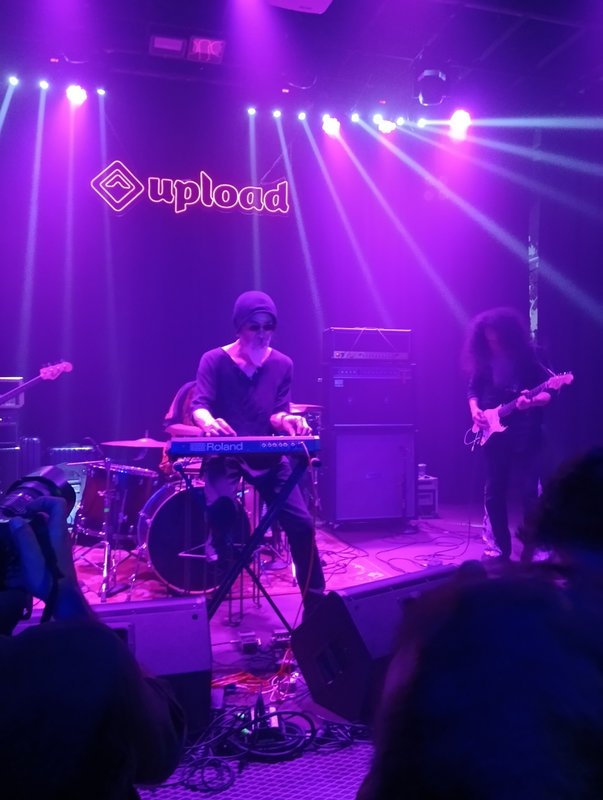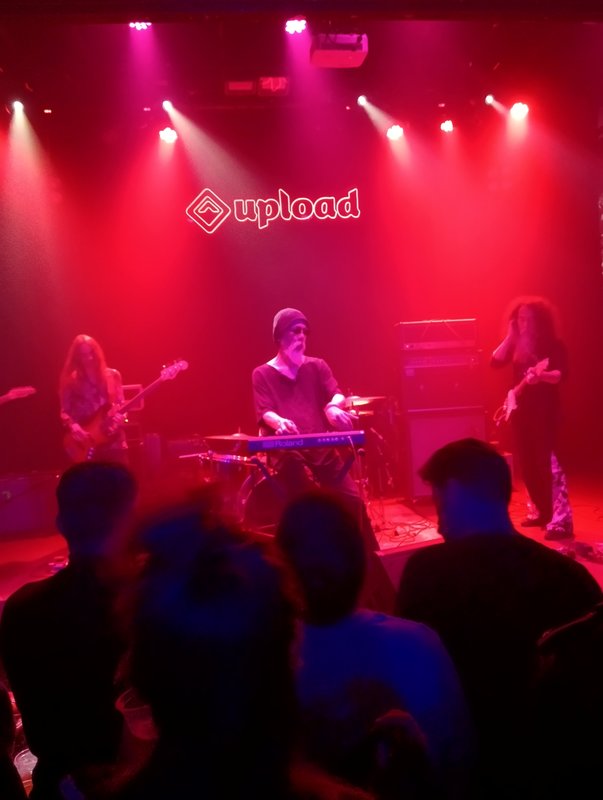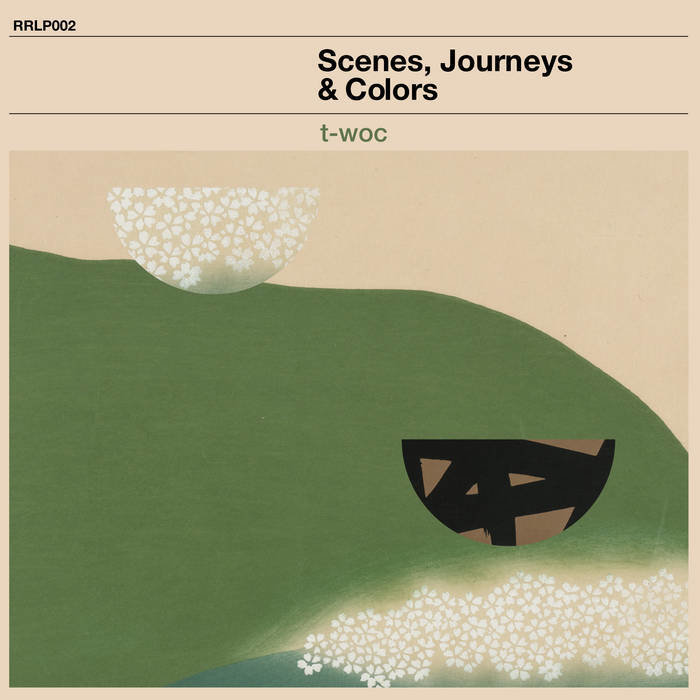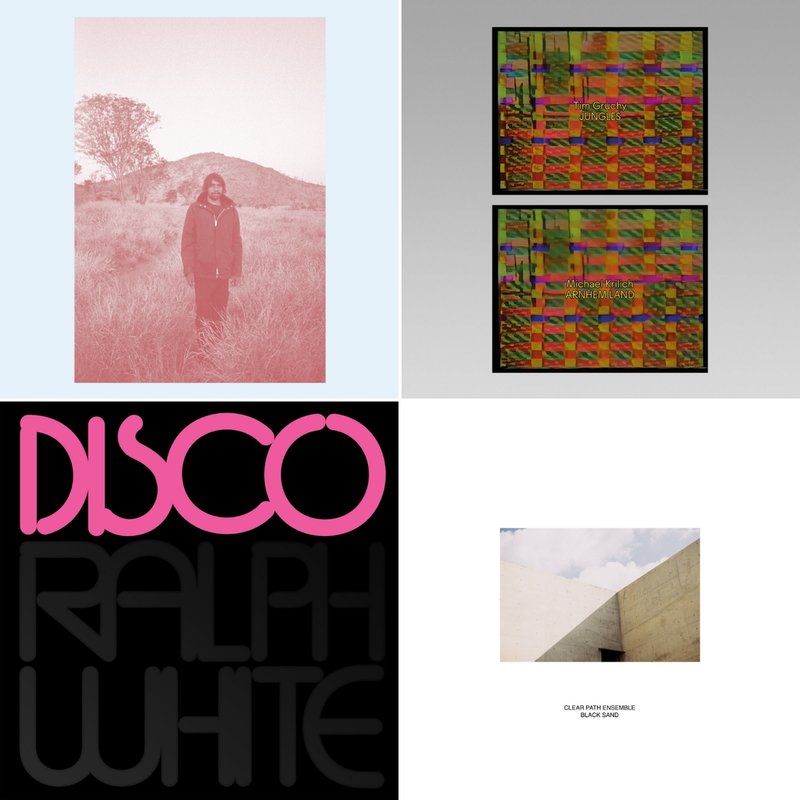Welcome to a new writer here at Test Pressing Towers. Oli Hanson was a stalwart on the London party scene for many years before relocating to Barcelona in 2016. He is a regular contributor to the Test Pressing Forum, and his tastes range from pastoral folk and sunset moods to cosmic disco and dark room chuggers. He also writes a regular trilingual newsletter on music, life, travel and all points in between and has a Substack which you can follow HERE. It's very good. HERE'S some of his favourite music of 2025 so far. Over to Oli...

High above Barcelona, the city’s second largest mountain, Montjuic looms above the metropolis, a popular haunt for visitors, lovers and cable car enthusiasts. In years’ past, I attended parties at various points of Montjuic, featuring the great and the not-so great; everyone from Laurent Garnier and DJ Harvey to Skream and Hernan Cattaneo. It’s conveniently located, the nearest neighbours are a funicular ride away, and the massed ranks of the city’s clubberati find expression there each week.
Sala Upload is possibly my favourite venue in town. Tucked away in the corner of a courtyard in Pueblo Espanyol (an unusual museum which takes the form of a recreated Spanish town), it puts on a reliable programme of niche music, where the true fans congregate and an intimate vibe is assured. In a Spanish live music scene increasingly beholden to large festivals, it is a blessing that somewhere like there not only exists but can also still attract artists of the highest calibre. The venue is popular with touring DJs and musicians and appeals to anyone alienated by the rampant profiteering elsewhere.
In recent years I have experienced everything there from freaky disco ‘Glove’ parties to super obscure I-F DJ sets. There are hidden rooms, locked doors and rumoured boudoirs, whilst a prominent chequered floor adds a slight Alice in Wonderland feel to live events. Given that aesthetic, it was perhaps fitting that I should be seeing a deeply psychedelic band called Acid Mothers Temple performing live there for the third time.
I first became intrigued by this Japanese quintet in 2016 on one of their previous European tours. Whilst ostensibly a rock setup, the music owes as much to the kraut or prog experimentalism of the 70s, Can, Neu, Popol Vuh with elements of Hawkwind, Goblin or Tangerine dream thrown in. An AMT gig is intense. Casual spectators will get a headache, whereas disciples enter a state of nirvana. There are barely 5 or 6 tracks in 90 minutes. You get immersed. It’s hypnotic. Regardless what you do or do not consume, you are assured a cosmic trip. This is in large part due to the ever-present founder of the group, and tour de force, Kawabata Makoto on guitar who founded the band in 1995. He was joined three years later by Higashi Hiroshi on synthesiser. The two have a seemingly kinetic understanding. Both have an other-worldly presence on stage. It is akin to being in the presence of wizards, sorcerers or shamans.
I flirted with rock as a child but lost interest as dance music took over my life. Thrash, metal, punk, grunge, garage bands usually bored me to tears, but the hippie scene was a different story. The freakouts which emerged out of the 60s are relatable to anyone reared on modern dancefloors. I attended Richard Norris’s inaugural Psychedelic Festival at the Zu Studios in Lewes when I lived in Sussex and got a taster of how expansive it can be. Someone was walking around with a carrier bag dispensing free Philosopher’s Stones, which gave the evening an entirely new meaning. Unless, of course, it was the poet earnestly reciting the lyrics of Inner City’s Big Life to a captivated audience?
Indeed, it was there in a room – or asylum? -on a white settee, amidst 72 other white settees in various configurations, that I became interested in Norris’s side project Time & Space Machine, who on Time And Space Taxi harked back to Brian Eno’s earlier 801 productions (notably their astonishing cover of Tomorrow Never Knows). They had a keen sense of humour too, as evidenced by the track Pill Party In India, a firm favourite of Psychemagick. Sometimes in a similar spirit, I immerse myself in Harry Nilsson’s jump into the fire (later given a suitably energetic new lease of life on stage by James Murphy) and the repetition is key. The immersive trip has that ability to entrance and seduce. You never want it to end.

Which brings us back to AMT. Seasoned fans have noted that the band usually play the same set with little variation. Ordinarily this might cause restiveness, but the band improvise heavily, especially in Hiroshi’s loops, in a way that cements their cult reputation with diehard followers. As their best-known track Pink Lady Lemonade wafts across the room, there is a loud cheer as an anticipated thumping kick drum comes in. This coda is as ecstatic as any music I’ve ever heard live. Around me, people lose the plot as the music slowly builds into a frenzy. To my left, one man is swivelling with his top off.
Elsewhere, I see people hugging with glee, a sign of the wider jubilation across the small yet packed club. As the track fades and then returns for the final furlong, cheers ricochet around the room. I experience a similar feeling of rapture when their finale segues into Cometary Orbital Drive. There is an element of surrealism too when Kawabata raises his guitar theatrically before passing it around the crowd. Are we into full Spinal Tap territory or is this all part of the act? A nod to Hendrix too, albeit without the lighter fluid.
I think it is certainly interesting that there hasn’t been more discussion of this kind of cosmic space rock, or the obvious sonic and spiritual connection with dance culture. AMT are evidently a strong influence on a younger crop of bands who have emerged in recent years. Many of these have co-opted the trippy energy with more electronic elements or in some cases drone effects. There are also overlaps with people like Peter Kember (Sonic Boom/ex Spacemen 3) or bands such as Minami Deutsch and 10000 Russos.
Maybe I have a slight obsession with codas? Long repetitive passages which totally engulf you. Am thinking of Peter Gordon & Factory Floor Beachcombing, Etienne Jaumet For Falling Asleep or The Naturals The Pulse, the chuggy energy of Mushrooms Project or experimental collaborations like the very kraut-esque Simple Headphone Mind by Stereolab and Nurse with Wound.
The truth is AMT can’t really be appreciated at home. You cannot replicate the raw, live experience in a sixth-floor Catalan apartment. I’m not sure many fans could name a single record they’ve ever released. You need to be there. I imagine the original hippies felt a similar degree of euphoria and sensory overload hearing Santana’s Soul Sacrifice for the first time at Woodstock. And perhaps on a mild, inauspicious Friday evening, we had a brief glimpse into how another generation felt?


